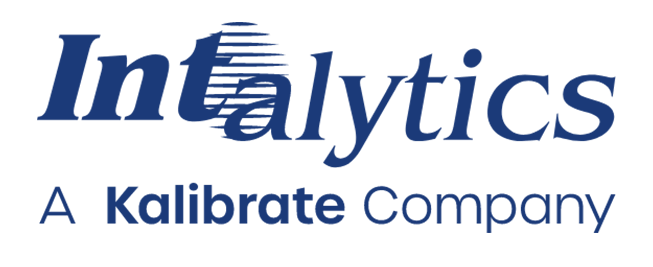Intalytics Q&A: Predictive Analytics in Healthcare Marketing

In the second in a series of articles focused on the importance of leveraging predictive analytics in healthcare, two members of Intalytics’ senior management team offer their perspective on leveraging analytics to inform marketing strategies and tactics:
Jim Sellers – Senior Director, Marketing Services
Matt Montgomery – Senior Director, Client Development
This discussion covers a wide range of topics, including brand awareness, behavioral marketing, and new mover targeting, with real-world examples illustrating best practices in healthcare marketing.
What are the benefits to healthcare providers (medical, dental, veterinary) of using predictive analytics or predictive targeting from a marketing standpoint?
Matt Montgomery: Healthcare providers, particularly in the medical space – think large integrated hospital systems – know the importance of building brand awareness. The episodic nature of patient needs requires marketing tactics that keep those hospital systems top of mind and in the consideration set. That focus has historically resulted in providers employing mass marketing approaches, using tactics ranging from sponsorship of local sports teams to billboards and TV to create brand awareness in the markets they serve. Over the past 10-15 years, we’ve seen a shift towards more targeted outreach to specific individuals and households. Simply put, leveraging predictive analytics to identify the “right” consumers to communicate with is a no brainer to make efficient use of marketing budgets. Jim – I’ll bet you’ve got a great example or two to highlight here.
Jim Sellers: Of course. One recent example in the specialty healthcare space that comes to mind is our work with a regional operator of veterinary practices. Their goal was to acquire new customers while simultaneously driving down the cost to acquire and increasing ROI. Through analysis of their customer data, we created a most valuable customer profile for cat owners, dog owners, and pet owners and built three different predictive targeting models. The analysis identified a ranked and, prioritized universe of non-customer households to which we then served targeted display ads.
Another aspect of that campaign involved our team geofencing dog parks, boutique and national branded pet stores, and pet adoption agencies – the logic being that the behavior of consumers observed within these locations suggested they were highly qualified prospects. Through a combination of predictive analytics and “fishing where the fish are”, the campaign set a record for this operator from a new customer acquisition standpoint, with an ROI of 9:1.
Going back to the topic of brand awareness for a moment, how do those strategies translate to new consumers that have recently moved into a given market?
MM: The “new mover” dynamic is as critical in healthcare as it is in any sector that we serve, and I might argue that it’s even more important for healthcare providers to account for than it is for retailers, banks, grocers, and other operators across industry.
Fun fact – statistics show that anywhere between 10-15% of the U.S. population moves each year. That said, not all moves are created equal. Some consumers might relocate mere neighborhoods away from their current residence – think young families that want to stay within the same school district boundaries. Others are moving to a different part of a larger metropolitan area, or are relocating to a different city or state altogether.
As a healthcare provider, being first to begin the process of developing a one-to-one relationship with an individual or family that just moved into your trade area gives you a leg up on other competing providers. We help clients understand which new movers to focus on when creating personalized brand awareness – be it as the go-to provider for pediatric dentistry, for primary care, or for pet care.
JS: The varying types of moves is an important point to expand on. We are big believers in incorporating spatial analysis into the marketing solutions that we provide to clients. When auditing existing new mover programs that our clients employ, we typically see a couple of mistakes that routinely make:
- They don’t take the spatial component of the move into account. In Matt’s example of a family moving within the same school boundary, that household is by no means a “new mover” to the trade area. They’ve simply relocated within the same trade area. Why spend marketing dollars treating that household the same as one moving from a different city or state?
- Many clients’ “go-to” new mover tactic is new mover saturation media. These “welcome to the neighborhood” programs treat all new movers the same, regardless of the nature of the household that moved, the distance moved, and without regard to where the move occurred. We help our healthcare clients target new movers in several unique ways: 1) prioritize new movers relocating into neighborhoods with a shared lifestyle profile that suggests a strong fit with our client’s brand, 2) apply geospatial analytics to determine the distance of the move, eliminating households that moved within the same trade area, and 3) emphasizing the value of new movers who live closest to our client’s locations, since as proximity increases, the likelihood of conversion increases.
MM: On a related topic… for a national DSO (dental service organization) that we work with, we’re educating them on the opportunities that are presented when existing patients relocate to new cities or states. In both the dental and veterinary sectors, it is common to see locally branded practices or clinics that give the consumer no indication that said practice/clinic is part of a larger provider network. Let’s say that I’m an existing patient of a general dentistry practice in the Phoenix metro, a practice that is part of a larger national DSO. I’m relocating to the Dallas-Fort Worth metro, and that same national DSO also has practices in the metroplex. When I make that move to DFW, the DSO has an opportunity to proactively notify me of the relevant practice(s) proximate to my new home, and the ease with which my records can be transferred, etc. While I’m technically a new mover, I should be treated as the existing patient that I am and marketed to accordingly.
So far the conversation has been primarily focused on predictive marketing. How does behavioral marketing fit in?
JS: We define behavioral targeting as consisting of two components: targeting consumers whose observed behavior indicates a need for our clients’ services, and then delivering the marketing message as close as possible to the occurrence of that behavior.
The example earlier of geofencing pet adoption agencies for a veterinary network is a clear example of behavioral targeting. Another recent client example involves work that we’ve done for a multi-state urgent care provider. We geofenced mass transit stations during flu season and delivered digital ads for flu shots. As consumers are standing at the train station surrounded by fellow commuters coughing and sniffling, it’s reasonable to assume that the recognition of the need for a flu shot is triggered.
For this same client as part of a different campaign prior to the back to school period, we geofenced youth sports complexes, YMCA’s, and swimming pools, and then served digital display ads with a sports physical offer to devices that were observed within those geofenced areas.
The world of marketing for healthcare organizations is evolving rapidly. Do you have a specific challenge you’re trying to address with an upcoming marketing campaign? Are you evaluating potential pivots in your marketing strategy? Contact our team today to begin the conversion about applying data and analytics to reach new prospective patients and/or to reactivate lapsed patients.
Related News
Carousel items












